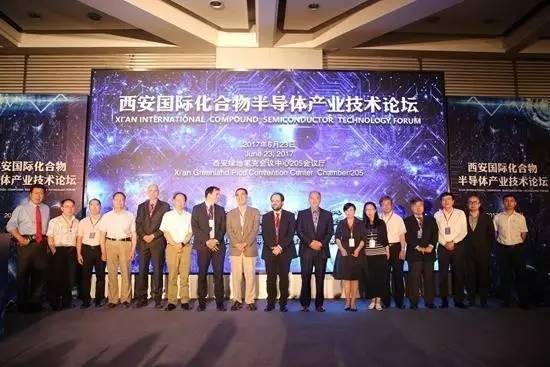According to the 14th annual edition of its World University Rankings, the list of the top 1,000 universities from 77 countries and regions, there are two Chinese mainland institutions in the top 30 for the first time and China boasts more universities in the rankings than ever before.
����(j��)��14�������W(xu��)����������Ї���(n��i)���״��Ѓ��������C(j��)��(g��u)�Q�����ǰ30�����ϰ��W(xu��)��(sh��)���^�����@��������ԓ��������������77��(g��)���Һ͵^(q��)��1000����W(xu��)��
Key institutions that moved up the list from last year's rankings include Peking University, which went from 29th to 27th place, reaching the same rank as the University of Edinburgh and New York University. Tsinghua University increased from 35th place to 30th, overtaking the University of Melbourne, Georgia Institute of Technology, and LMU Munich. Fudan University climbed 39 places to 116th position.
������W(xu��)�����c(di��n)�W(xu��)�����������^ȥ����������������ĵ�29����������27�����c�۶�����W(xu��)�ͼ~�s��W(xu��)���������A��W(xu��)�ĵ�35����������30�������^ī������W(xu��)�����������W(xu��)Ժ��Ľ��ڴ�W(xu��)����(f��)����W(xu��)��������116�����^ȥ��������39λ��
Phil Baty, editorial director of the rankings from Times Higher Education, said: "Our rankings show that the Asian giant's higher education improvement is real and growing. With two top-30 representatives for the first time in the 13-year history of the rankings, China's leading universities are truly now part of the global elite and overtaking prestigious universities in the US, UK, and Europe."
��̩��ʿ�ߵȽ�������W(xu��)�������������M(f��i)��?�͵ٱ�ʾ�����҂��������@ʾ���Ї����遆�^(q��)�������ߵȽ������M(j��n)��؛��r(ji��)��(sh��)����Խ��Խ�졣ԓ�����Q��13���ԁ����״��Ѓ����Ї���W(xu��)�M(j��n)��ǰ30�����Ї�һ����W(xu��)�F(xi��n)�������Q��ȫ��Ӣ�����C(j��)��(g��u)֮�������������s��Ӣ�����W�����ƴ�W(xu��)����
An expert in global university rankings for 20 years, Baty said that the rise of Chinese higher education had been driven by a large investment in science and technology subjects.
�͵���ȫ���W(xu��)�����I(l��ng)��Č���������20���S����(j��ng)�(y��n)������ʾ���Ї���(du��)�����ƌ��I(y��)�ľ�Ͷ�뎧��(d��ng)�ˇ���(n��i)�ߵȽ�����������
"Chinese universities are doing outstanding work in science, technology, mathematics, life sciences," Baty said, adding that the next phase for China would be to strengthen its arts and humanities and social sciences programs. "I think arts and humanity subjects are very important to create the balance and to provide the creativity needed to push research to the next level. So that's the challenge. Another challenge is perhaps to be even more international. "
�͵ٷQ�����Ї���W(xu��)����������������(sh��)�W(xu��)�������ƌW(xu��)�ȷ�����F(xi��n)��ɫ������߀�f����һ�A�����Ї���(y��ng)ԓ�ӏ�(qi��ng)ˇ�g(sh��)���������(hu��)�ƌW(xu��)���I(y��)�������J(r��n)��ˇ�g(sh��)�����ČW(xu��)�ƌ�(du��)�ڌ�(sh��)�F(xi��n)����ƽ���Լ����B(y��ng)�Ƅ�(d��ng)�����M(j��n)һ���l(f��)չ�Ą�(chu��ng)�������P(gu��n)��Ҫ���@���Ї�������(zh��n)֮һ����һ�(xi��ng)����(zh��n)���S������Ӈ��H���D(zhu��n)׃����
In Asia, the National University of Singapore tops the ranking in this region, in 22nd place globally. Japan's flagship, the University of Tokyo, has fallen to its lowest position in the 13-year history of the table to 46th place. And three of South Korea's leading universities have declined.
�¼�������W(xu��)�ځ��^(q��)�����������ȫ���������22���ձ�피�W(xu��)���|����W(xu��)�����������vʷ�µ������ڵ�46λ���n��������һ����W(xu��)�����½���

Baty believes that the trend demonstrates the global higher education landscape is changing. "Other east Asian nations are feeling the competition from the rise of China."
�͵��J(r��n)�����@һڅ�ݱ�����ȫ��ߵȽ����ĸ�����ڰl(f��)����׃�����Ї��ߵȽ��������|���������Ҹ��ܵ��˸�������
One of the most prestigious world university ranking systems, the Times Higher Education haspublished the World University Rankings every year since 2004. It has 13 separateperformance indicators, covering the full range of a university's core activities includingteaching, research, knowledge transfer, and international outlook. The 1,000 universitiesranked have all been evaluated by their academic peers through a survey which draws onmore than 20,000 survey responses from senior scholars from more than 140 countries andregions.
�����������������Ĵ�W(xu��)�����wϵ֮һ����̩��ʿ�ߵȽ�������2004����ÿ�궼��(hu��)���������W(xu��)������ԓ��������13��(g��)��(d��)�����u(p��ng)�r(ji��)ָ��(bi��o)��ȫ�渲�w�˸�У�ĺ��Ļ��(d��ng)����̌W(xu��)���о���֪�R(sh��)�D(zhu��n)���Լ����HҕҰ�ȡ��W(xu��)�g(sh��)�ˆTͨ�^һ�(xi��ng)�{(di��o)�錦(du��)����ϵ�1000����W(xu��)�M(j��n)���u(p��ng)�r(ji��)���{(di��o)�鷴������140����(g��)���Һ͵^(q��)��2�f������(j��)�W(xu��)����




